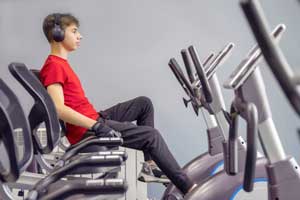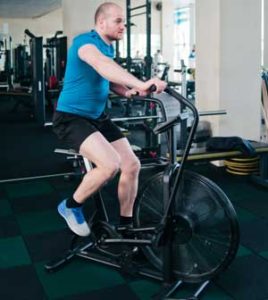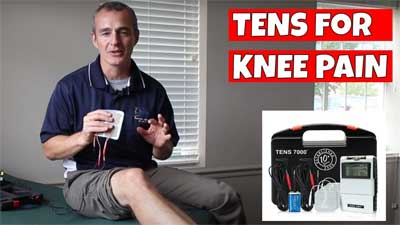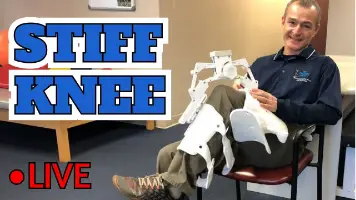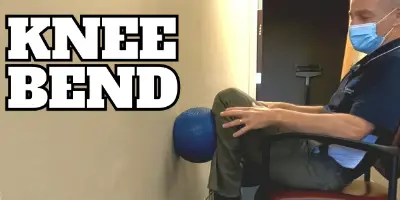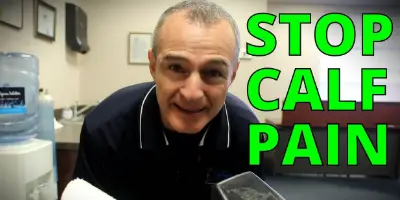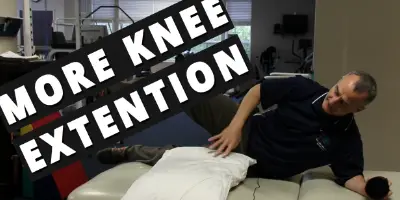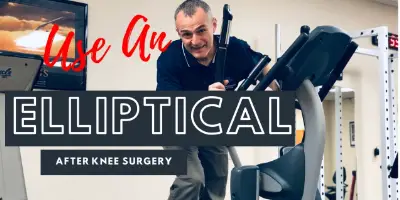How soon after knee replacement can I use exercise bike?
You can start using an exercise bike within the first 48-hours following a knee replacement surgery.
Standard practice in many physical therapy clinics is to begin using a recumbent bike with a gentle rocking motion until the knee is capable of a completing full rotation without significant pain.
When is it recommended to start using a stationary bike following a total knee replacement?
Immediately following the procedure a physical therapist will ensure the patient is safe to stand, walk, and move around the recovery room.
Many total knee replacements are performed on an outpatient basis and patients are discharged to home the same day.
A physical therapist or your surgeon may recommend you start using an exercise bike within 48-hours following surgery to keep the knee moving and reduce the chances of blood clots.
* Recommendation: when a stationary bike is used in the early recovery stages it is often recommended that the patient start with pedal rocks until the knee is capable of a full revolution without significant pain or compensation.
Phase 1 – Week 1 Post Op:
During the first week following knee replacement surgery a recumbent bike is often used to initiate joint motion.
Pedal rocks are an exercise used in which you place both feet on the pedals of the bike with the surgical knee foot on the lower pedal. You gently rock the pedals forward and back to initiate movement at the knee joint without significant pain.
Pedal rocks are performed for 3 to 5 minute episodes or as tolerated by the patient.
This exercise is usually performed 3 times a day if you have access to a recumbent or upright exercise bike at home.
As your range of motion improves you increase the size of the arcing motion until a full pedal revolution is achieved.
* TIP: Some patients prefer a reverse revolution at first until the knee range of motion has improved enough to complete a forward revolution.
Phase 2 – Week 2-4 Post Op:
As time on the exercise bike increases to 10-minutes the next phase would be to increase time walking and performing other exercises on your feet.
Once you can perform a 10-minute episode of pedaling on the exercise bike then spending more time performing weight bearing exercises are encouraged.
Some examples of weight bearing exercises include the following:
- Walking
- Elliptical Trainer
- Stairs
- Treadmill
- Stair Stepper
Phase 3 – Weeks 5-12 Post Op:
After 10-minutes of continuous cycling has been achieved, consider increasing the resistance and intensity of the time spent on an exercise bike.
Intensity may be varied by increasing the speed, moving the seat closer to the pedals to gain more range of motion, or increasing the resistance.
Interval training is another great option for increasing the intensity of time spent on an exercise bike.
A sample program may look like the following:
2-minutes warming up at a comfortable pace and seat position
2-minutes of 4 rounds of (10-seconds light resistance high speed | 20-seconds of light resistance low speed)
2-minutes of 4 rounds of (10-seconds high resistance low speed | 20-seconds of light resistance low speed)
2-minutes of high resistance low speed with a seat position close to the pedals
2-minutes cool down at a comfortable pace and seat position
What kind of stationary bike is recommended following a total knee replacement?
There are 4 common types of stationary bike:
1.) A recumbent bike – This is a bike that has a larger seat and back rest attached to the seat. The pedals are more forward and the seat level is closer to pedal level. See this post for more details >
2.) An upright bike – This bike has a smaller seat, no back support, and the seat is typically positioned above the pedals.
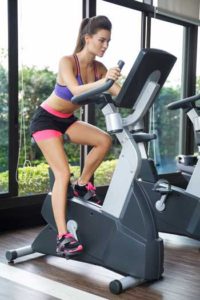
Upright-Stat-Bike-TKR-Rehab
3.) A fan bike – This is usually a version of an upright bike. It has arms that move in conjunction with the foot pedals and uses air resistance.
4.) Budget pedaler – This is a small, light weight pedal device that may be placed infront of a chair. The device is usually priced at less than $50. This device is often used for the lower body while sitting and the upper body while standing.
* Recommendation: when choosing any piece of exercise equipment the most important consideration is use… ‘Will You Use It?’
Buy something you will use. Buy something you will enjoy. Buy something that will improve your quality of life.
What if I cannot complete a full revolution on the pedals?
This video shares a simple strategy to start using a recumbent bike even if your knee flexion is limited.
* Recommendation: Unhook the strap on the pedal of your surgical side leg. Position your heel on the pedal on your surgical side leg while placing the ball of the foot on the center of the pedal on your non-surgical leg. Gently rock the pedals back and forth until you are able to complete a full revolution. Repeat the as the knee motion improves and move your seat slowly forward as tolerated.
What can I do to relax my thigh muscle?
A common report from patients is that the thigh muscle, the quadriceps, will tighten up as soon as they try to complete a full revolution on a bike.
That can happen for several reasons, but the most common is due to the body’s natural protective response. When something hurts or has the potential to hurt our body will tighten the muscles around a joint to prevent movement and prepare for pain.
One way to reduce this response is to massage the muscle. My favorite is a rolling pin massage. In this video you can see how a simple rolling pin from the kitchen will reduce pain, reduce guarding, and improve tissue mobility.
More Blog Posts …
Total Knee Replacement Pre Surgery Online Class
If you are schedule for a total knee replacement surgery or you already had your surgery and would like to learn more, this FREE class may be the perfect option for you.
Can you use a TENS unit after knee replacement?
A TENS unit is safe to use after a total knee replacement. It is commonly used during knee flexion and extension exercises. Using TENS to reduce pain during knee replacement exercises may improve range of motion without the need for more medication.
How To Stretch A Stiff Knee After Knee Replacement
Stretching a stiff knee at home requires patience and time. Research suggests a long duration low intensity stretch will produce the greatest benefits in knee range of motion. In this post I will discuss using a Joint Active Systems and static progressive stretch technique to improve knee flexion at home.
Knee Replacement Bending Flexion Exercises at Home
Knee bend, also known as knee flexion, exercises may be performed immediately following knee replacement surgery. This videos shows several examples of knee flexion exercises to be performed at home. 120 degrees of knee flexion is considered normal range of motion following surgery.
Can I Run After Knee Replacement
Conventional advice is to avoid high impact activities after a total knee replacement. This would include running, jogging, and other high impact sports. The concern is the increased wear and tear on the new knee will cause it to wear out sooner or possibly even...
Calf Pain After Knee Replacement
Calf pain can happen for many reasons, but after surgery the most common reason is weakness, swelling, and change in activity levels. These exercises will help improve calf mobility, increase strength, and condition the calf to handle the workload associated with normal walking.
Please check with your physical therapist or doctor before performing these exercises.
Minimalist Running Shoe Review Unboxing Merrell Men’s Trail Glove 4 Runner
The Merrell Men’s Trail Glove 4 Runner has been a great show. I am updating this description today January 1, 2020. I have worn the shoe for work in the clinic as a physical therapist as well as the occasional run. It is ideal for a medium or narrow foot. I absolutely would not recommend it for a wide foot or a foot that will swell over the day.
Best Tip To Improve Knee Extension- Prone Hangs
Improve knee extension with this simple and effective exercise! Total knee replacement | ACL reconstruction | Knee Surgery
Using an Elliptical Trainer After Total Knee Replacement Surgery
Using and choosing an elliptical trainer after total knee replacement surgery or any other knee surgery can be challenging. There are so many different brands available on the market. In this video I will show you how to safely get on, off, and use the elliptical trainer whether you are using one at home, at the gym, or in your physical therapy clinic.
3 Versions of a Hip Bridge for Total Knee Replacement Therapy At Home
The hip bridge is a very common exercise following total knee replacement, but doing it correctly isn’t as common. There are three version of the hip bridge and in this video I share information about all three.
